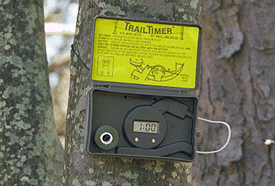

However, this is different from the response time, which is the amount of time it takes for the pixels to change colors, and effects motion.
#Timetool trail camera tv#
Unfortunately, there's no way to improve or control the amount of time needed in this part, as it changes from TV to TV. However, the screen can't make it appear instantly, and the amount of time it takes to appear depends on the technology and the panel. Once the television has processed the image, it's ready to be displayed on the screen, and the processor sends the video to the screen. Only more demanding video processing settings, like motion interpolation, will usually add input lag, while others, like the brightness, won't. Though you can't control the speed of the processor, you can exercise some control over how many operations it needs to do by enabling and disabling settings. The time this step takes is affected by the speed of the video processor and the amount of processing needed. Adding variable refresh rate technology.Interpolating the picture to match the TV's refresh rate.Once the image is in a format understandable by the video processor, it will apply at least some processing to alter the image in some way. With modern digital TVs, using an HDMI cable will allow you to minimize the acquisition time, as that will transfer from the source to the TV almost instantly. This phase of the input lag is rarely an issue on modern TVs as it was more of an issue in the past with analog connections like from early gaming consoles. The more time it takes for the TV to receive the source image, the more input lag there will be. Three main factors contribute to the input lag on the TV: acquiring the source image, processing the image, and displaying it.

The total input lag time is the addition of three partsīefore we get into the details of how we test, let's first talk about the causes of input lag.


 0 kommentar(er)
0 kommentar(er)
